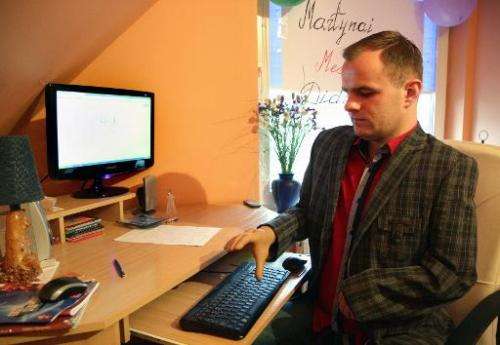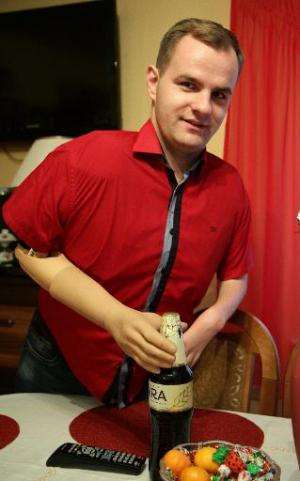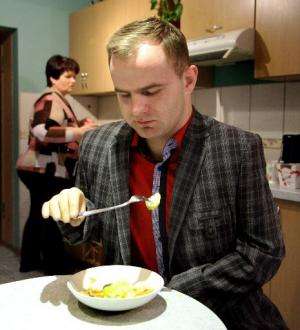Lithuanian gets life-changing bionic arm

Martynas Girulis cannot stop moving. He forks a few potatoes onto his plate, pours himself a glass of water, drinks it through a straw, then gets right back up.
This is new. The 21-year-old Lithuanian was born with a neuromuscular disease that left him unable to use his arms. But just last year he got a bionic arm, which he controls with his brain, after undergoing surgery his Austrian doctor calls the first of its kind.
Pre-surgery, both his arms were bent at the elbow and inert. Now he is taking things out of the fridge, putting them back in, placing a vase on the table and picking up a box of chocolates.
"He's the first patient with a birth defect to undergo bionic reconstruction," said Oskar Aszmann, who performed the operation in Vienna in November and is a world expert in reconstructive surgery.
"This has never been done before," said the Medical University of Vienna surgeon.
Bionic arms and hands are not new. Aszmann himself carried out the first bionic hand operation in 2010. But unlike previous recipients, who were amputees, Girulis had a useless limb from birth.
His case takes the use of bionic transplants an important step further, because he had never used the limb and so had to train his brain on how to operate it.
"In the very recent past we saw many improvements in terms of increasing the ability to control hand prostheses and to gather sensory feedback," said Silvestro Micera, a neuroengineer at Switzerland's Ecole Polytechnique Federale de Lausanne who developed the "feeling" limb.
"This opens up very promising opportunities to improve the quality of life of disabled people," he told AFP.
'I found a hand!'

Girulis was born with arthrogryposis, a neuromuscular disease preventing him from rotating and flexing the muscles in his arms and, to a lesser extent, in his legs.
He only learnt to walk at the age of six after undergoing six major surgeries in Lithuania and Sweden and has always needed someone to help him throughout the day.
"He was always an active kid. He could even ride a bike, by leaning against the handlebars with his whole upper body," said his mother Danguole Giruliene.
His life changed on February 28, 2011, she told AFP: "He ran down the stairs yelling: 'I found a hand, I found a hand!'"
Thanks to the Internet, Girulis had discovered Aszmann and his work. Three and a half years later he got a prosthesis of his own.
Making room for it required amputating Girulis's inert right arm—a decision he mulled over with his family for more than a year and which was also reviewed by a university ethics committee.
Before Aszmann could perform the elective amputation, he had to transplant nerves into Girulis's shoulder for him to be able to control his new limb.
Girulis also had to train his shoulder muscles for a year and had muscle transplanted from his thigh.

"Manoeuvring this hand is like flying a helicopter," he said, smiling.
To get the hang of it, he practiced with a virtual hand on the computer. He would move it mentally with the help of electrodes, all while controlling his muscle activity on another screen.
Every time he moved his arm, he would hear a beep meant to make him fully aware of the motion he was making.
"What I enjoy these days is being able to do small things: to pick up a fork, raise a glass, grab a hand rail on the bus," said Girulis, who is finishing up high school via distance learning and thinking about studying psychology.

The Lithuanian government covered 80 percent of the cost of the 92,000-euro ($113,000) bionic arm and 5,000-euro amputation.
Aszmann plans to publish an article on the case this year, after making sure Girulis's bionic arm continues to work well over the long term.
He has already received similar surgery requests.
© 2015 AFP


















